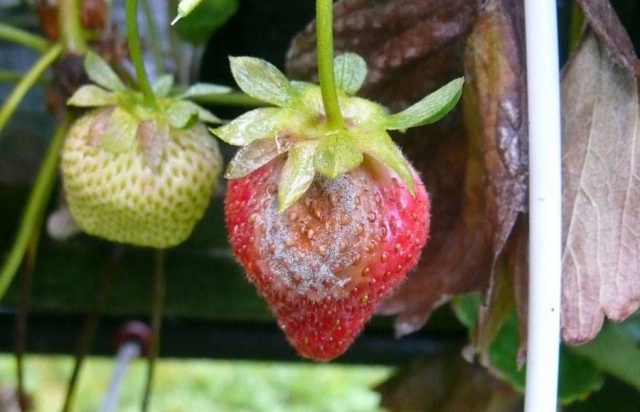Strawberry is the most popular berry crop, and while growing it, not one gardener is immune from the appearance of various diseases and pests. Currently, a huge number of varieties of this crop that are resistant to the most common ailments have been developed, but the danger of their occurrence always exists, so it is very important to know how to correctly identify and cure the disease. In this article we will talk about the description of the most common diseases of the berry, find out why they occur and what to do in each case.
Table of contents
- Description of the main diseases of strawberries and fight against them
- Strawberry anthracnose
- White, gray and black rot
- Rhizoctoniosis disease
- White and brown spotting
- Gray mold disease
- Root late blight
- Why does late blight rot?
- Fusarium and verticillous wilting
- Bacterial burn and its treatment
- Bacterial cancer of the roots of the garden berries
- Mottle virus
- Wrinkles virus on leaves
- Damn broom
- Mealy dew
Description of the main diseases of strawberries and fight against them
There are a lot of diseases of strawberries and they are all different. Some affect the aboveground part of the plant, and others the root system. The most dangerous diseases adversely affect the entire plant as a whole, thereby causing its death.
Having noticed the signs of the disease on the bush, it is necessary to start its treatment immediately, because ultimately the illness can spread and destroy the whole plantation and crop.

Strawberry anthracnose
The disease affects the entire aerial part of the plant, including leaves, stems and berries. The danger of the disease lies in the fact that under its influence you can lose not only most of the crop, but also strawberry bushes themselves.
Initially, on the leaves you can see gray spots, surrounded by a crimson stripe, dark brown sores and gray dots form on the stems.If the disease begins to progress, the stem completely dies off.
Curing the disease is not so easy. The treatment of anthracnose is a rather complicated process that requires a quick reaction, because otherwise the disease progresses rapidly and becomes the cause of the death of the plant:
- If the disease is in the initial stage and is present in the bush for no more than 7-10 days, Ryoitl-Gold, Metaxil and Quadris fungicides can cope with it;
- In more advanced cases, use 1% Brodsky liquid.
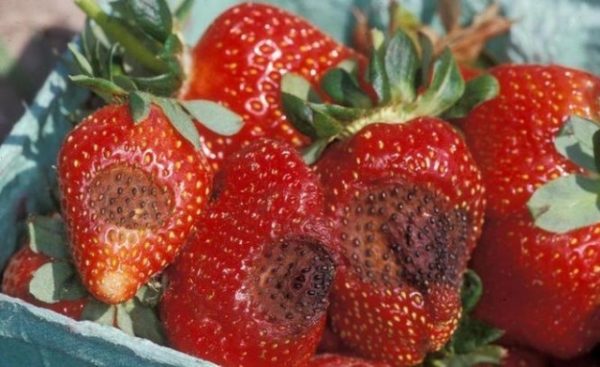
White, gray and black rot
Gray rot spreads very quickly and begins its course with berries. They form brown spots with a gray fluffy bloom, they quickly grow and cause the fetus to die, after which they smoothly pass to the stalk and leaves of the plant.
Unfortunately, in this case, the plant cannot be cured. When rot is found, the affected bushes are removed and burned to avoid the spread of fungus in the garden area.
White rot most often appears due to too dense planting. Initially, all ripe fruits begin to become covered with white down, after which the leaves become whitish, dry and die. To avoid the spread of the disease to healthy shrubs, you can use treatments with Derozalom. Sick bushes have to be destroyed.
Black rot is formed due to excessive moisture. The berries darken and become watery, they form at first a colorless and then dark brown patina, characteristic of fungal diseases. Affected plants are removed and burned.
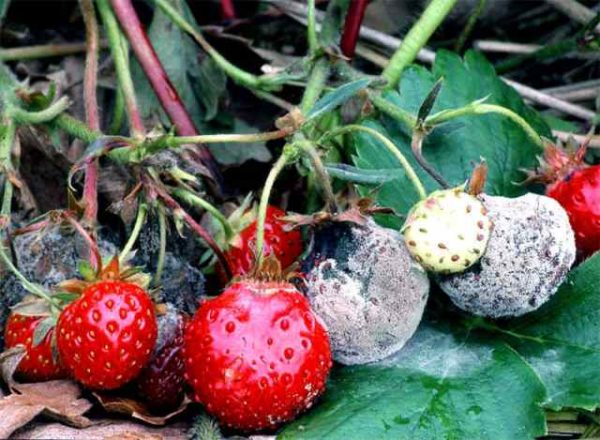
Rhizoctoniosis disease
In another way, this disease is called black root rot. Young black stalks form small black dots, which eventually grow and merge. As a result, they become fragile and brittle. The aboveground part of the plant is also infected. It becomes brown and dies.
To cure such a disease is impossible, the affected bush should be removed. After that, the soil is watered with a solution of potassium permanganate or other similar means. As a preventive measure, it is worth planting only high-quality seedlings and carrying out systematic treatments with fungicides.
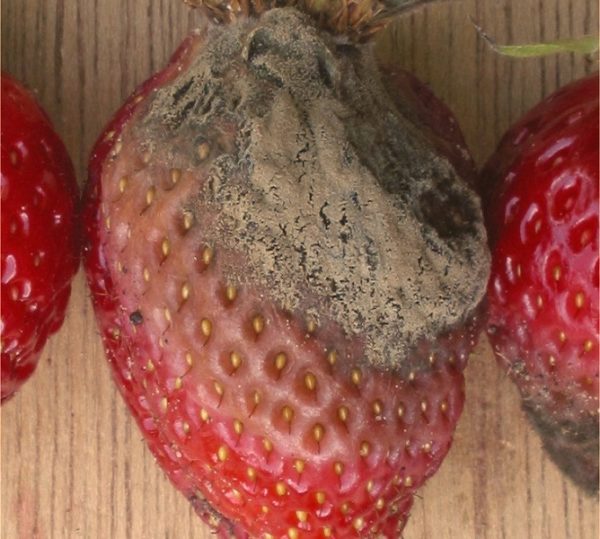
White and brown spotting
White spot is a very common disease. Brown dots appear on young leaves, and on older leaves white spots with a purple frame. They gradually grow and combine, after which the leaves become perforated.
Cure disease is impossible, the diseased plants are dug out and burned. The soil is fed with phosphorus-potassium fertilizers and disinfected. Healthy bushes are treated with copper-based chemicals.
Brown spotting is expressed in the appearance of brown spots on the edge of the leaves, which are gradually spreading out over the entire surface, spores can be seen on the surface of the plate at the advanced stages, and crimson spots on the peduncles and whiskers.Methods of struggle are similar with white spot.
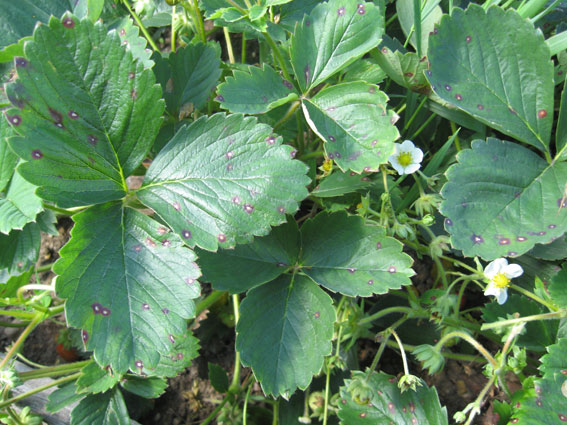
Gray mold disease
This disease affects the entire aboveground part of the plant. Fruits become brown and blurred, on the affected places a dense gray bloom forms. If the humidity is increased, then a fluffy white mycelium may appear. Very soon, these berries dry up and fall off.
It is useless to fight the disease, but it is quite possible to prevent it. To this end, since April, healthy flowers are sprayed with Fundazole, Topsin M, Euparin. The treatment is carried out 3-4 times with an interval of 7-10 days.
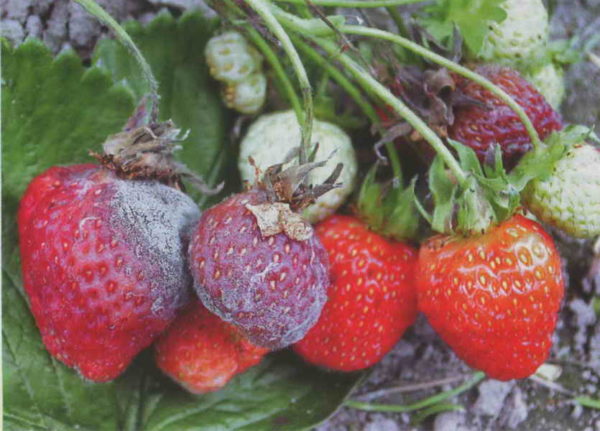
Root late blight
Late blight is a fungal disease that affects the roots of strawberries in early summer.
Symptoms of the disease are as follows:
- axial cylinder of the main root reddens throughout the diameter;
- small root shoots turn black and die off;
- lower leaves begin to lean towards the ground and lose color.
In the initial stages of the disease, you can treat with the help of chemicals such as Quadris, Ridomil or Profit.

Why does late blight rot?
This type of rot is considered the most dangerous and unpleasant, because it affects all parts of the plant, starting with the roots and ending with fruits. Late blight appears due to wet weather, the infection remains in the ground even after the removal of the plant, so it is very important to carry out disinfection on time.
The main signs of the disease will be:
- dark spots appear on the fruit, after which they dry out;
- the berries taste bitter and resilient;
- affected leaves and stem almost immediately dry out.
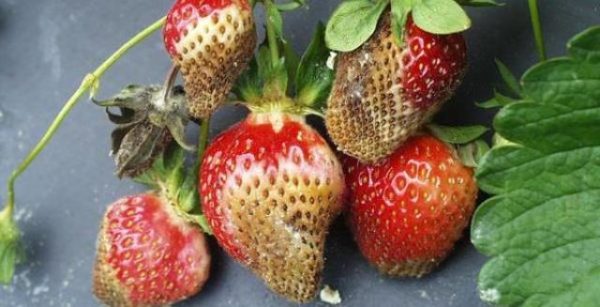
Fusarium and verticillous wilting
For all types of wilting is characterized by the defeat of plants by fungi, massive and very rapid spread. With the appearance of such a disease, the plantation can completely disappear in 1-2 years, and during this period the amount of the crop produced will significantly decrease.
The following indicators are signs of verticillary wilt:
- very slow growth of kuts;
- reducing the amount of green mass;
- redness of the petioles.
To combat the disease using the following methods:
- The exclusion of planting strawberries in those places where before it grew corn, potatoes and onions;
- Place of cultivation should be changed every 3-4 years;
- The affected plants are treated with a preparation that helps to get rid of the nematode, which is the distributor of the disease.
Initially, the edges of the leaves begin to turn black, the stalks turn dark brown, and the berries turn brown and dry. The green part of the plant begins to slope to the ground. If you notice the disease at an early stage, then strawberries can be saved by treating with the drug "Ordan".
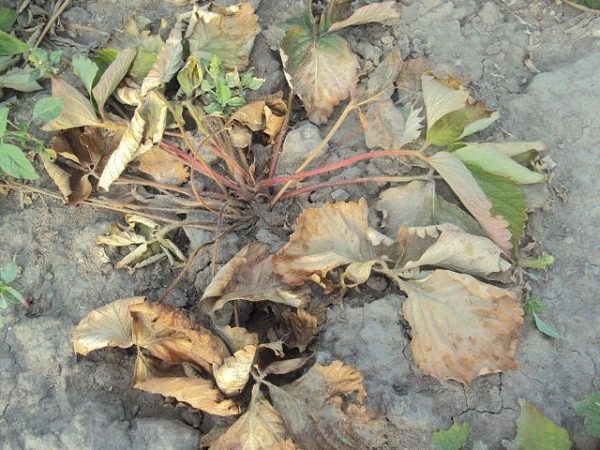
Bacterial burn and its treatment
Bacterial burn is a very common and dangerous disease.that affects the land part of the plant. Leaves form characteristic golden brown spots. Affected strawberry bushes must be removed and burned to avoid the spread of bacteria throughout the site.
As a preventive measure during the flowering period, the plantation is treated every 5-7 days with Brodsky liquid or antibiotics. Next to the strawberry should not be located hawthorn and other wild bushes, it is in them that the pathogens usually hide.
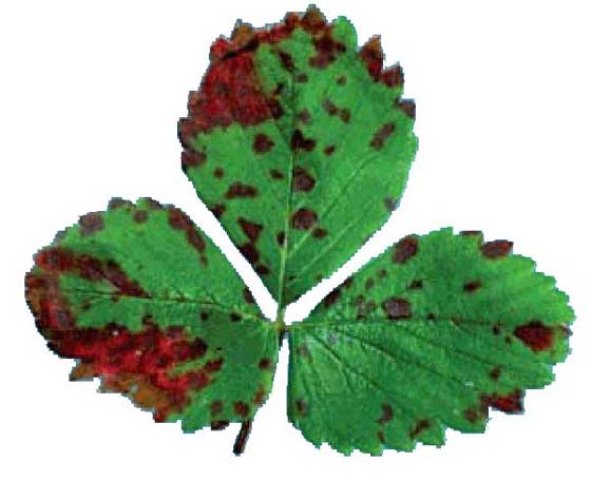
Bacterial cancer of the roots of the garden berries
Bacterial cancer occurs due to freezing of the roots in winter and after various mechanical damage to the aerial part. Bacteria can be located for a long time in all parts of the plant, while not forming bacterial cancer. The main symptom of the disease will be blackening and dying off of the root system.
As a cancer prevention, before planting, all seedlings must be treated with a solution against bacteria.
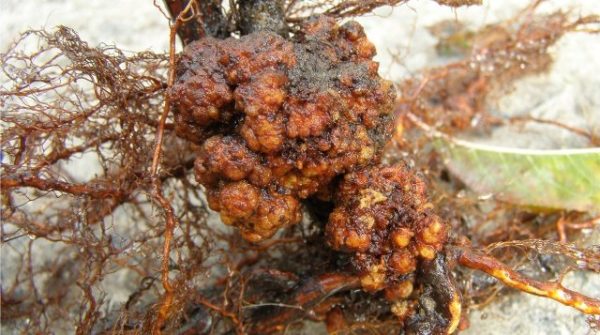
Mottle virus
Mottle virus appears on strawberries often enough. Visible signs of the disease are practically absent, but the plant loses up to 30 percent of the total yield. The berries become smaller and lose their attractive taste. Mottle virus spreads aphid, so in order to get rid of the disease will have to first destroy these insects.
Wrinkles virus on leaves
Most often, these viruses appear simultaneously with many fungal diseases., worsening the situation on the plantation. On the leaves, along the main vein chaotic spots are formed.Then the growth of the plates themselves becomes uneven, they gradually turn yellow or darken and shrink.
The vectors of the disease are insects, pollen and seeds used as planting material. Cure plants impossible. Prevention will be the proper care of plantings.
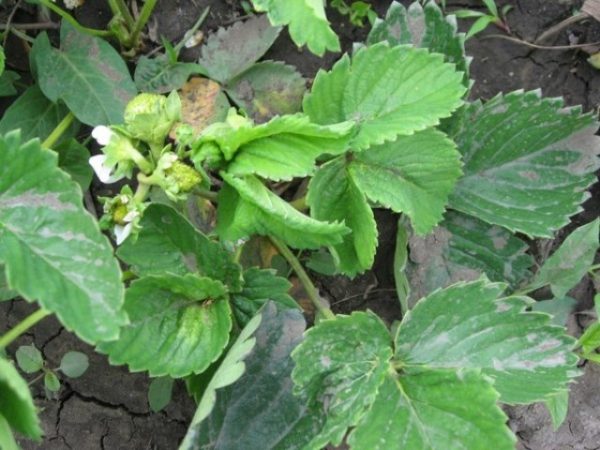
Damn broom
Due to the appearance of this mycoplasma disease, the shape of the shrub changes:
- the uterine bush produces a set of short, underdeveloped whiskers, on which independent sockets are formed;
- leaves become lighter;
- sheet plate is twisted.
It is possible to get rid of the disease only by planting new seedlings and removing old broom-like bushes.
Mealy dew
Mealy dew affects the entire above-ground part of the plant and causes its death. The causes of the disease are too warm and humid air. You can notice the disease on the following grounds:
- On the affected leaves, a white, fluffy patina that is located on both sides appears. Then the sheet plate grows coarse, stops growing and twists. The last stage will be the formation of brown necrosis on the inside of the leaf;
- The whiskers are twisted;
- Appeared berries have irregular shape and unpleasant taste.
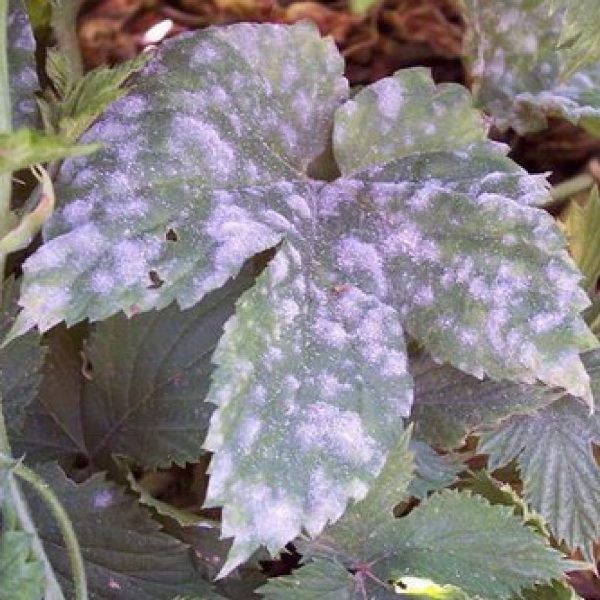
Preventive measures to combat powdery mildew will be treatment with Quadris, Fundazol or Bayleton. Affected plants are dug up and discarded.
Strawberries can be affected by a variety of diseases, and to avoid such troubles, you must follow all instructions when planting plants, properly care for the plantings and make preventive treatments with chemical and biological means.
